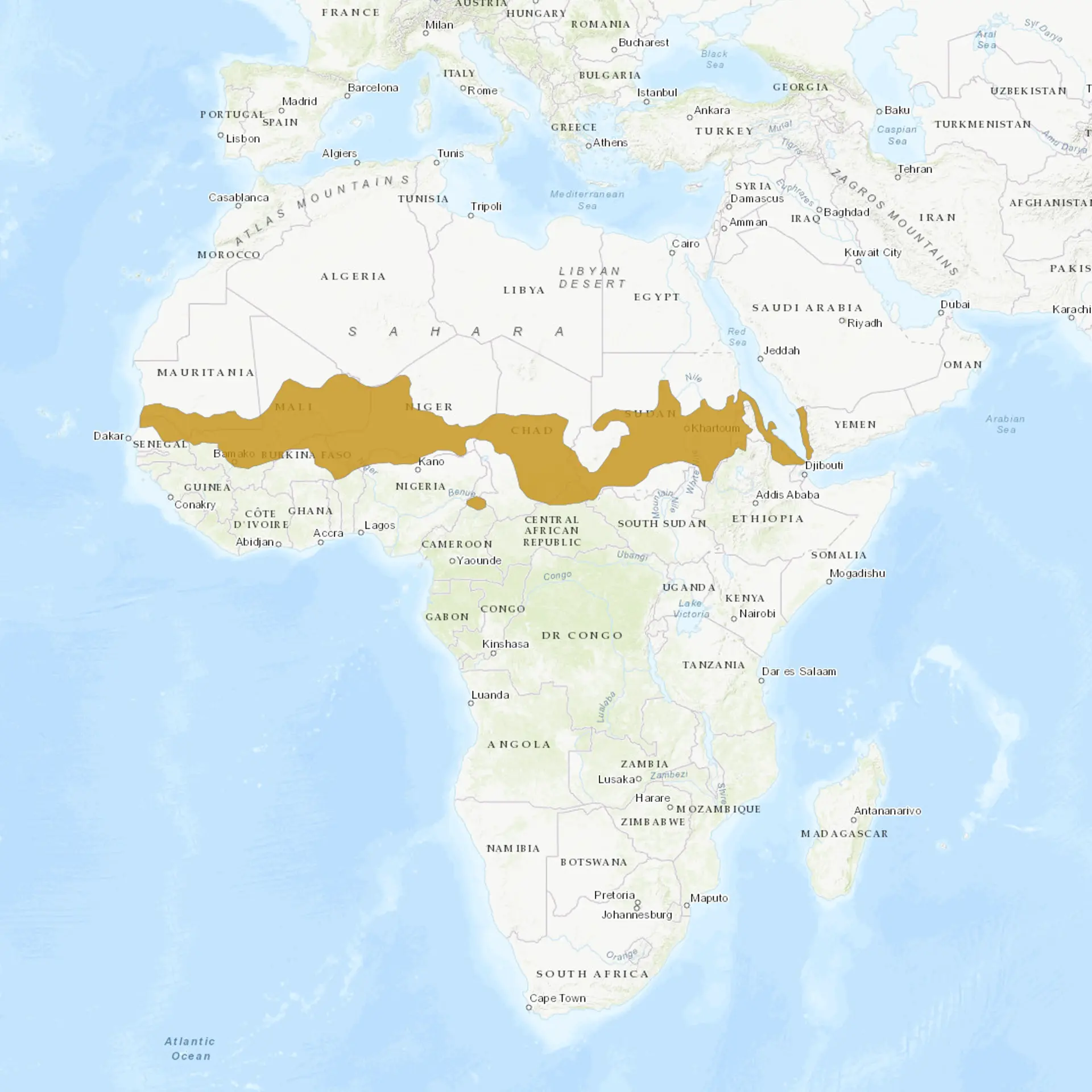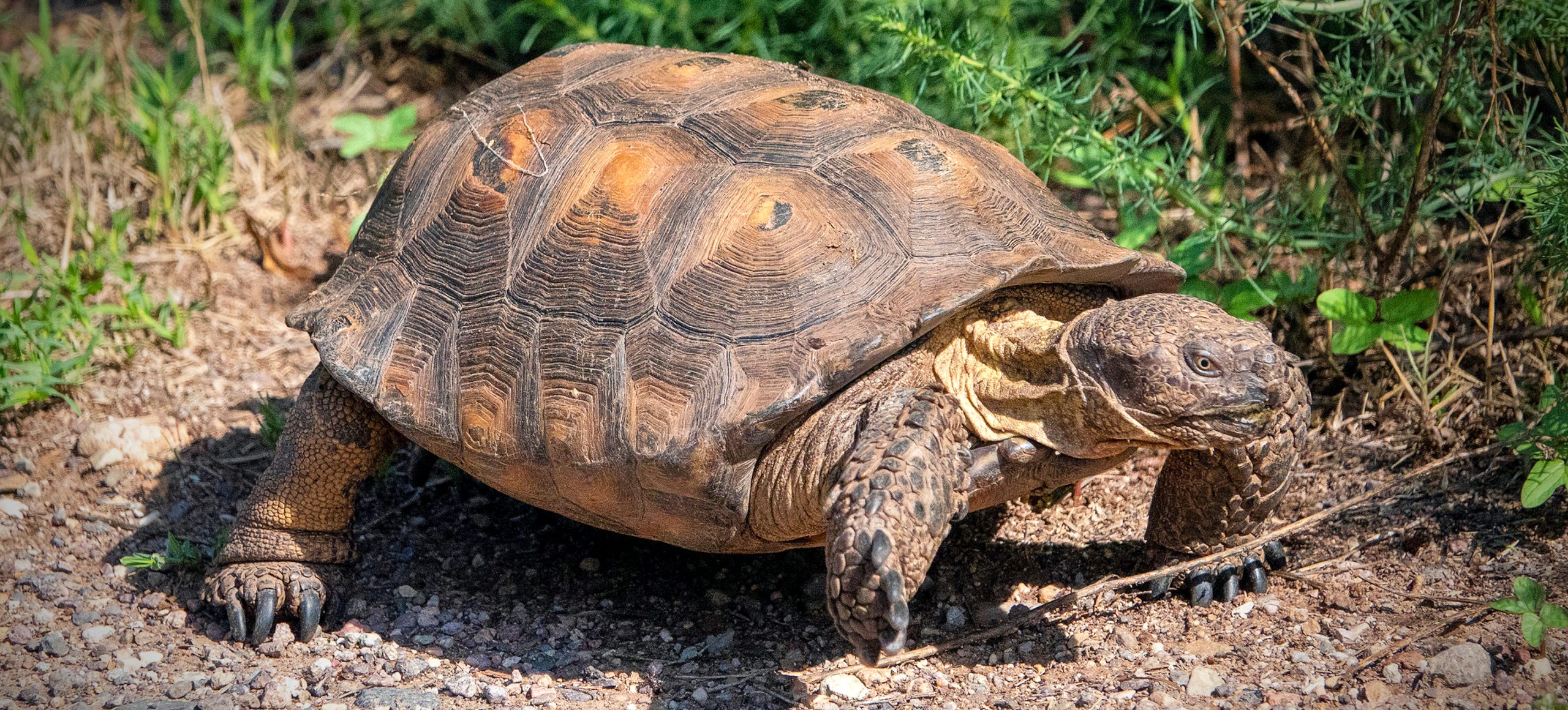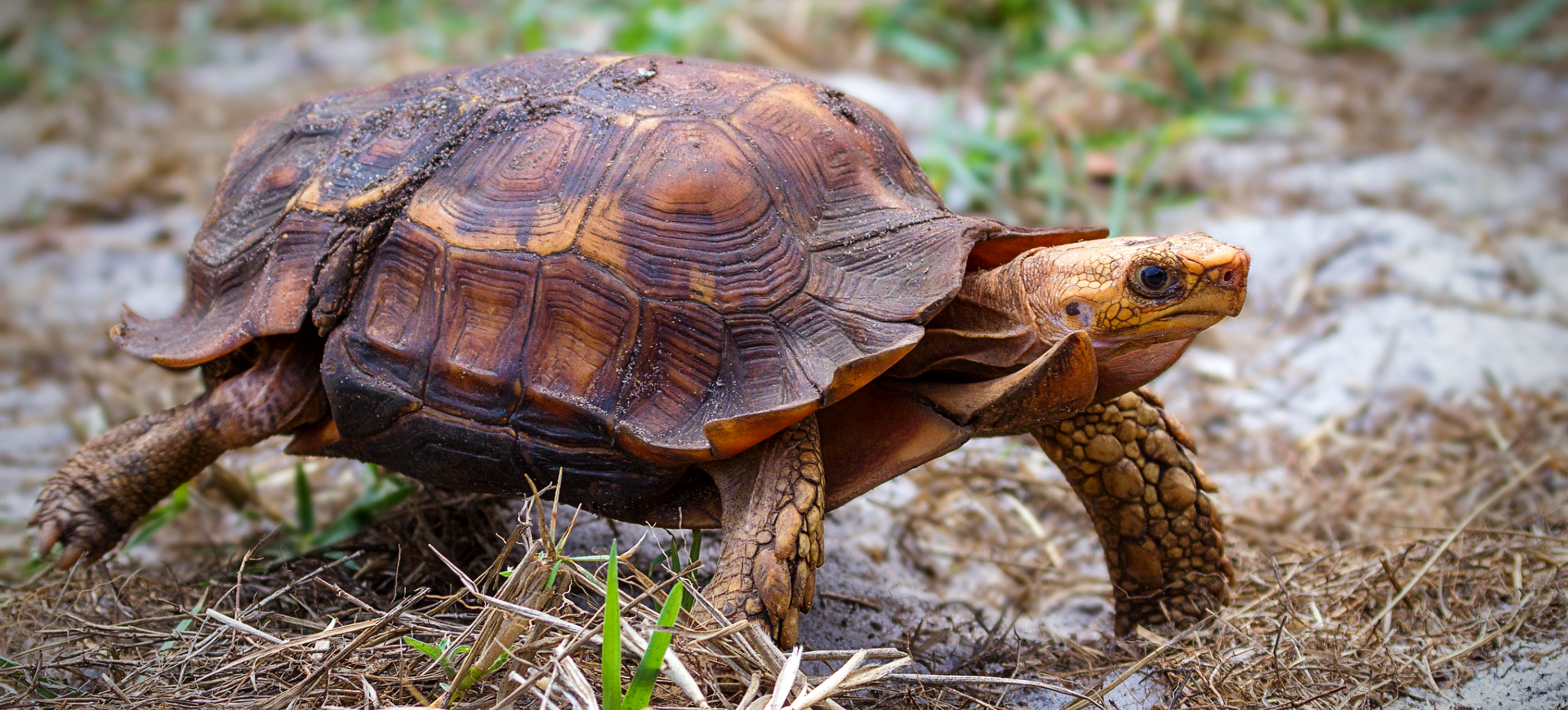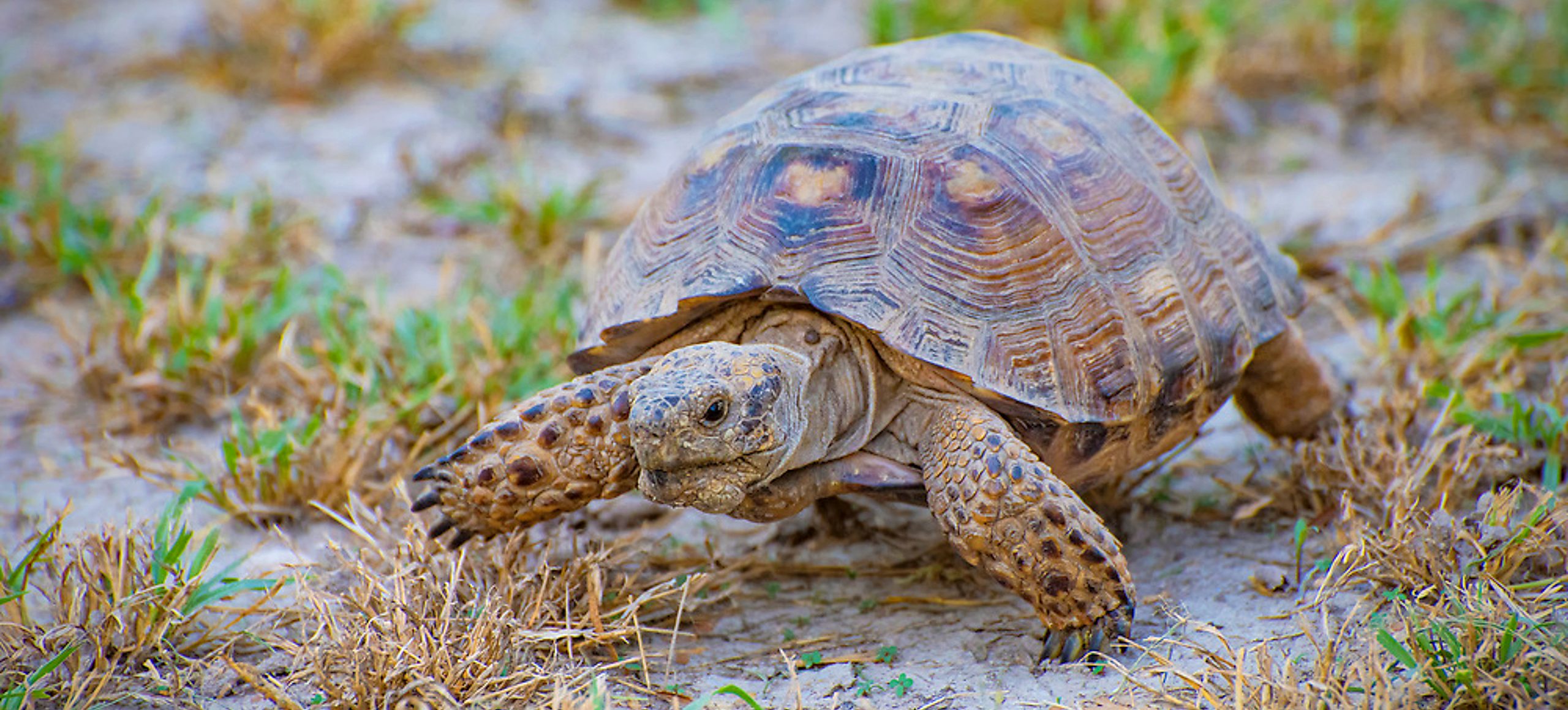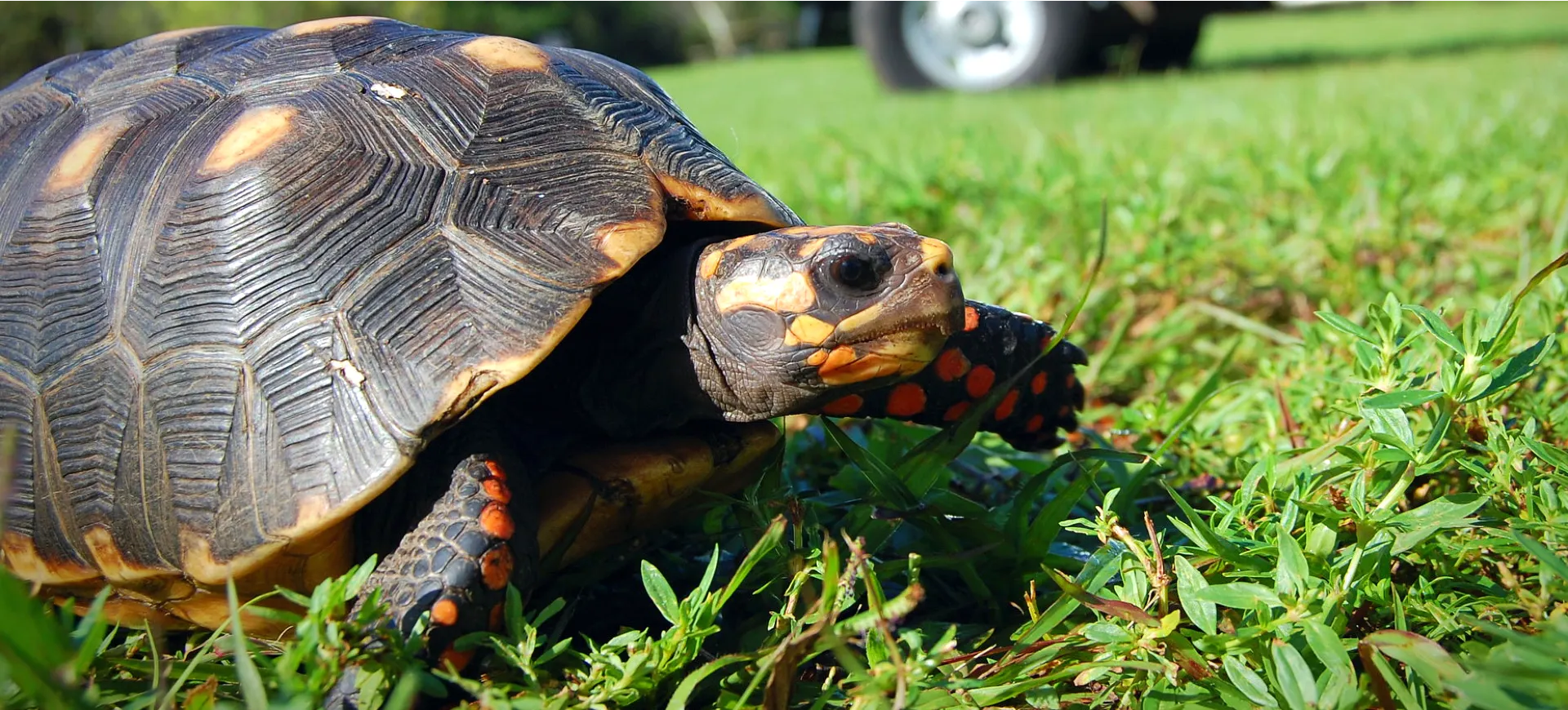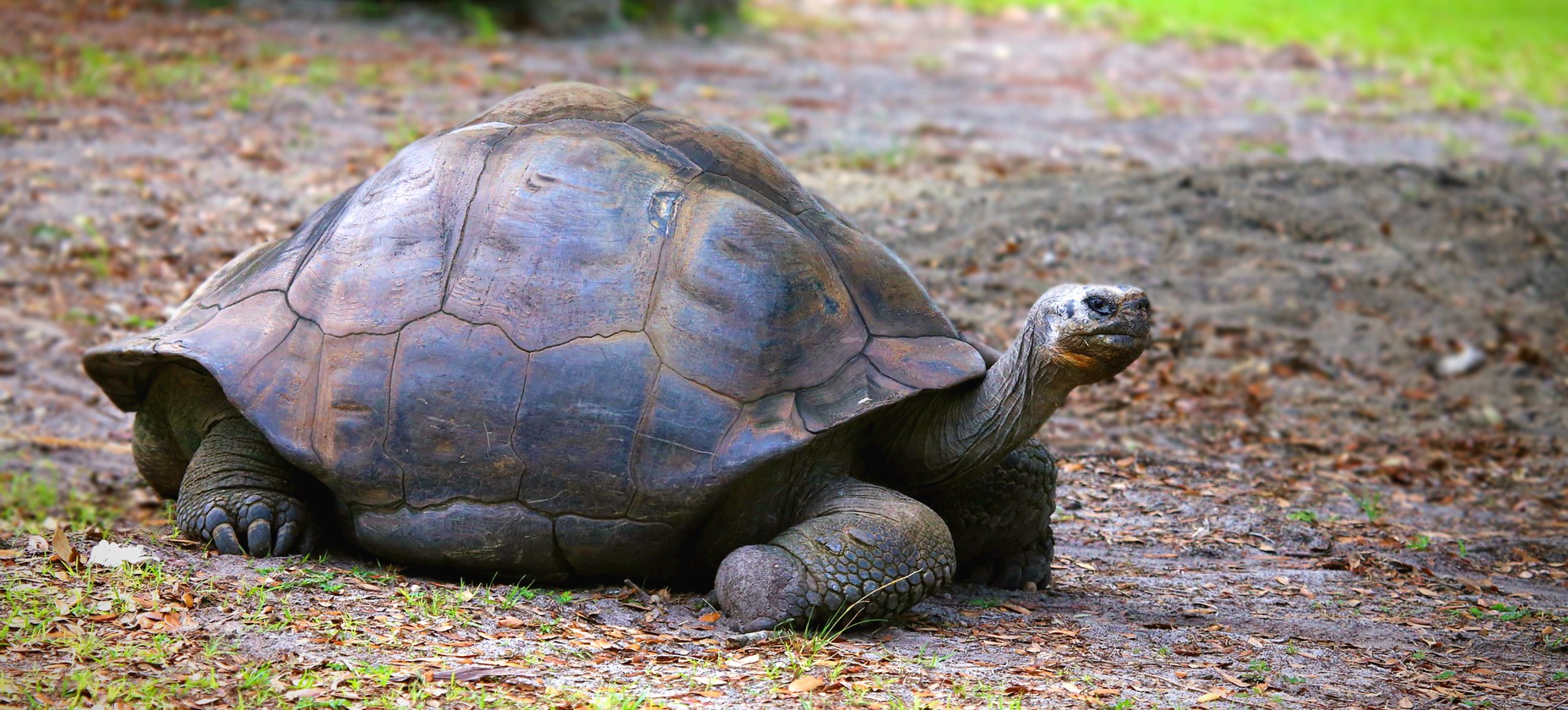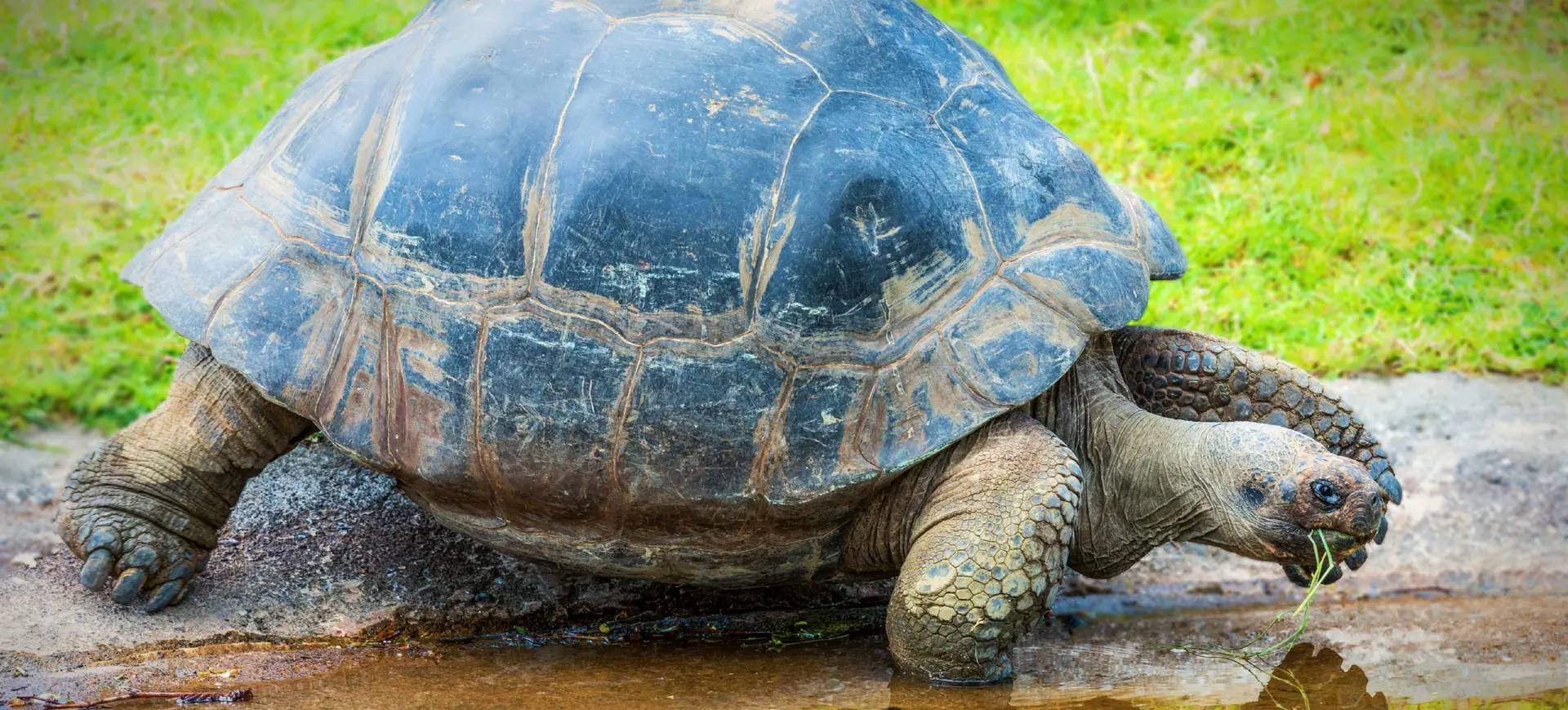Overview
The African Spurred Tortoise (Centrochelys sulcata), also known as the Sulcata Tortoise, is a species of tortoise that is native to the Sahara Desert and the Sahel, a transitional ecoregion of semi-arid grasslands, savannas, and thorn shrublands found in Africa. As the third largest species of tortoise in the world, and the largest species of mainland tortoise (the larger ones being island dwellers), the African Spurred Tortoise is a notable creature, distinguished by its large size, robust shell, and prominent spurs on its hind legs, from which its common name is derived.
They are built for life in a harsh, arid environment. Their shells are broad and domed but not as high-domed as other tortoise species. The color of the shell is yellowish-brown, offering perfect camouflage in its desert environment. The legs are thick and columnar, better suited for navigating rocky terrain than digging.
Adapted for life in a hot, sunny environment, the African Spurred Tortoise is a diurnal creature most active in the morning when it forages for food. It tends to retreat into the shelter of its burrow during the hottest parts of the day and at night and is known to aestivate during periods of extreme drought.
Taxonomy
Kingdom
Phylum
Class
Order
Family
Genus
Species
Type
Current distribution:
The African Spurred Tortoise retains a wide distribution across north-central Africa, from the western coastal countries of Mauritania and Senegal eastward to Sudan and Ethiopia. It is adapted to arid regions and can be found in desert margins, dry savannas, and thorn scrub habitats.
The species has been introduced outside its native range and can be found in parts of the United States (Florida, Arizona, and Southern California), where it has been released or escaped from captivity. In some of these regions, it has established self-sustaining populations.
Physical Description:
The African Spurred Tortoise possesses a broad, oval carapace (shell) that is noticeably flattened at the top compared to many tortoise species. The coloration of the carapace varies between specimens but is usually some shade of yellow-brown, with darker brown growth rings on each scute (the individual segments of the carapace).
Their most distinctive characteristic is the series of large conical spurs on the rear legs, hence their common name. Their skin is thick and covered with hard scales. The head is quite small relative to the body size, with a short neck covered in rough, scaly skin. A subtle tinge of orange surrounds the eyes, and they have a sharply hooked beak.

Lifespan: Wild: ~70 Years || Captivity: ~100 Years

Weight: Male: 105 lbs (48 kg) || Female: 34 lbs (15 kg)

Length: Male: 24-30 in (61-76 cm) || Female: 18-24 in (46-61 cm)

Height: Male: 16-18 in (40.6-45.7 cm) || Female: 10-12 in (25.4-30.5 cm)

Top Speed: 0.3 mph (0.5 km/h)
Characteristic:
Native Habitat:
African Spurred Tortoises are native to the southern edge of the Sahara desert in northern Africa. Their natural habitat spans from the westernmost part of the continent to the eastern coast, passing through countries like Senegal, Mauritania, Mali, Niger, Chad, Sudan, and Ethiopia. They inhabit arid and semi-arid areas and are well-adapted to harsh, hot environments with little water.
Despite being a desert-dwelling species, African Spurred Tortoises often create burrows in the ground to escape the harshest midday heat and cold nights. These caves can also provide some humidity, creating a microhabitat where these tortoises can better preserve their body moisture.
Biomes:
Biogeographical Realms:
Continents:
Countries:
Diet:
Diet & Feeding Habits:
In the wild, African Spurred Tortoises are primarily herbivores, feeding on various plants, grasses, and shrubs. They have been known to consume cacti, including the spines, which their thick skin and mucous membranes protect them from. Their diet also includes flowers and some fruits, contributing to their varied diet.
In captivity, their diet should comprise a high-fiber, low-protein, and calcium-rich diet. This includes mixed grasses, edible flowers, and leaves, with vegetables making up a small portion of their diet. They should not be fed dog or cat food, which is high in protein and can cause serious health problems.
Mating Behavior:
Mating Description:
African Spurred Tortoises have fascinating and somewhat aggressive mating behavior. During the mating season, males can become territorial and fight with other males to establish dominance and the right to mate with a receptive female. These fights involve head bobbing, circling, and attempting to overturn the rival male.
Once a male successfully courts a female, he mounts her from behind. The mating process can be a noisy event, with the male producing a variety of grunts, groans, and other sounds. After mating, the female will lay a clutch of 15 to 30 eggs in a shallow hole she has dug in the sand. The eggs incubate for about 8 months before the young tortoises hatch.
Reproduction Season:
Birth Type:
Pregnancy Duration:
Female Name:
Male Name:
Baby Name:
Social Structure Description:
African Spurred Tortoises are generally solitary animals, coming together primarily for mating. Males are known to be territorial and can be aggressive towards other males, particularly during the breeding season.
They have a complex system of caves and tunnels, which shelter them from the extreme temperatures of their habitat. Other animals often share these caves, contributing to their desert environments’ biodiversity and ecosystem health.
Groups:
Conservation Status:
Population Trend:
The exact number of African Spurred Tortoises in the wild is unknown due to their wide and fragmented range. The population, however, is believed to be decreasing due to habitat loss and the pet trade.
In addition to the wild populations, there are significant numbers of African Spurred Tortoises in captivity, particularly in the United States and other parts of the world, where they are popular in the pet trade due to their size and distinctive appearance.
Population Threats:
The primary threats to the African Spurred Tortoise are habitat loss due to agricultural expansion and overgrazing by domestic livestock. The pet trade also represents a significant threat. Despite laws regulating their trade, African Spurred Tortoises are collected from the wild and sold in markets worldwide.
Climate change also poses a potential long-term threat. Rising temperatures and changes in rainfall patterns could alter their desert and semi-desert habitats. Their slow growth rate and delayed sexual maturity also make it difficult for populations to recover from decreases.
Conservation Efforts:
Conservation efforts for the African Spurred Tortoise are mainly focused on habitat preservation and regulation of the pet trade. Efforts are being made to secure protected status for their natural habitat areas and educate local communities about the importance of preserving these ecosystems.
In terms of the pet trade, numerous organizations are working to regulate and monitor this species’ trade to ensure that it does not threaten wild populations. This includes breeding programs in captivity to reduce the demand for wild-caught individuals.
Additional Resources:
Fun Facts
- The African Spurred Tortoise is the third-largest tortoise in the world and the largest mainland tortoise.
- They have a long lifespan and can live up to 70 years in the wild and 100 years in captivity.
- Despite their heavy bodies, they are adept diggers and can dig burrows that are 10 meters long.
- They have a unique form of thermoregulation – by digging burrows, they create a microhabitat that helps them survive in the extreme desert conditions.
- Their shells are made up of individual plates, called scutes, which are made of keratin, the same material human nails are made of.
- They are known for their aggressive mating behavior, which includes bouts of head bobbing, circling, and attempting to overturn rivals.
- Despite being herbivores, they have been known to consume bones and hyena feces to obtain necessary calcium.
- Their Latin name “sulcata” means furrowed, and refers to the furrow-like scales on the tortoise’s legs.
- They get most of their water from the food they eat and can go for long periods without drinking.
- They are very good climbers and are known to climb over barriers in search of food or mates.


